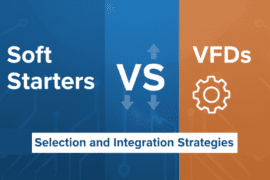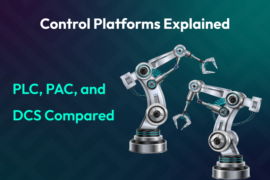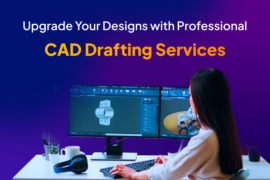Introduction – Understanding the Drafting Dilemma
Imagine a mid-sized automotive components manufacturer, poised to launch a groundbreaking new product. After months of development and significant investment, they face the Drafting Dilemma discovering critical design flaws during final production, flaws that should have been caught months earlier. The result? A three-month delay resulting in $2.3 million in lost revenue, contractual penalties, and a major setback to their market standing. All stemming from inadequate design infrastructure.
This Drafting Dilemma plays out daily across manufacturing sectors, where Original Equipment Manufacturers (OEMs) operate with makeshift design solutions that create a triple threat: limited efficiency, increased errors, and production delays. While design might seem like just another technical function, it’s the foundation upon which manufacturing success is built or crumbles.
This article explores how the absence of proper design infrastructure holds OEMs back and offers strategic insights into how outsourcing to design experts can transform these challenges into competitive advantages.
The Strategic Value of Outsourced Design Solutions – Drafting Dilemma

Outsourcing design functions to specialized partners has emerged as a strategic solution that addresses the key challenges while avoiding substantial investments.
1.Access to Specialized Expertise:
Partnering with dedicated design firms provides immediate access to capabilities that would take years to develop internally:
- Breadth and depth of knowledge spans multiple industries, design methodologies, and manufacturing processes
- Cross-industry best practices are applied to your specific challenges, bringing innovative approaches
- Specialized skills in areas like simulation, DFM, tolerance analysis, and documentation standards are immediately available
- Continuous exposure to the latest methodologies ensures your designs reflect current best practices rather than outdated approaches
This expertise translates directly to higher quality designs, fewer production issues, and more innovative solutions than most in-house teams can deliver. And helping manufacturers avoid the Drafting Dilemma from the start.
2.Cost Effectiveness:
The financial advantages of outsourced design solutions are compelling when analyzed comprehensively:
- Fixed vs. variable cost structures allow organizations to align design expenses with actual needs rather than maintaining constant capacity
- Elimination of recruitment, training, and retention costs saves approximately 150% of annual salary per design position
- Technology investment requirements shift to the partner organization, converting capital expenditures to operational expenses
- ROI analysis typically shows 30-45% cost advantages for outsourced design versus equivalent in-house capabilities when all factors are considered
Asset-Eyes delivers these cost advantages through flexible engagement models tailored to your specific needs ensuring you only pay for design resources when you need to minimize the risks tied to the Drafting Dilemma.
3.Scalability and Flexibility:
Perhaps the greatest advantage of outsourced design solutions is the operational flexibility they provide:
- Resource scaling happens seamlessly as project demands fluctuate, eliminating both capacity constraints and idle resource costs
- Specialized expertise can be engaged for specific projects without long-term commitments
- Market changes and opportunities can be addressed rapidly without staffing constraints
- Peak workloads are handled without the stress and quality compromises often seen with in-house teams working beyond capacity
At Asset-Eyes, we’ve built our service model specifically around this flexibility providing OEMs with on-demand access to specialized design talent that scales with your project needs. Our clients particularly value how quickly we can adapt to changing requirements without the delays typically associated with internal resource allocation.
This flexibility creates significant competitive advantages, particularly in industries with seasonal demands or rapid product evolution cycles. And helping avoid bottlenecks that lead to the Drafting Dilemma.
4.Focus on Core Competencies:
Strategic design outsourcing allows OEMs to concentrate resources on their true differentiators:
- Management attention shifts from design process challenges to strategic manufacturing priorities
- Manufacturing excellence receives appropriate focus without design distractions
- Resource utilization improves across the organization as specialized tasks are handled by appropriate experts
- Strategic partnerships create mutual value through focused expertise rather than diluted capabilities
In-House vs. Outsourced Design: Cost Comparison
| Cost Factor | In-House Approach | Outsourced Approach |
|---|---|---|
| Staffing | Full-time salaries, benefits, training (Fixed) | Project-based fees (Variable) |
| Technology | Software licenses, hardware, upgrades (Capital expense) | Included in service fees (Operational expense) |
| Specialized Expertise | Multiple specialists required (Underutilized) | Access as needed (Optimized utilization) |
| Scaling Costs | Step increases with each new hire | Gradual increases with project scope |
| Downtime Costs | Paid regardless of workload | Minimal to none |
| Training & Development | Ongoing investment requirement | Provider responsibility |
| Typical Annual Cost (Mid-sized OEM) | $750,000-$1.2M | $400,000-$650,000 |
| ROI Timeline | 3-5 years | 6-12 months |
The True Cost of Inadequate Design Infrastructure
1.Financial Impacts
The financial consequences of inadequate design infrastructure extend far beyond obvious direct costs. When design issues arise, companies face immediate expenses including redesign labor hours (often at premium rates to meet tight deadlines), scrapped materials that no longer meet revised specifications, tooling changes, and production line reconfigurations. Additional quality assurance testing and validation further compound these direct costs.
Even more significant are the indirect costs that affect a company’s market position. Delays in time-to-market give competitors the opportunity to seize valuable market share while your product stays stuck in development. Resources diverted to fixing design issues mean lost opportunities elsewhere, leading to customer dissatisfaction and potential contract penalties. The capacity for new product development diminishes as teams become consumed with remediation rather than innovation. The financial consequences of inadequate design infrastructure extend beyond direct costs. The Drafting Dilemma often leads.
- Key Takeaway: Design inadequacies create both immediate costs and long-term financial damage that compound over time.
The long term financial trajectory creates a concerning pattern for affected organizations. Manufacturing companies with inadequate design infrastructure typically see 12-18% lower profit margins compared to industry peers. This margin compression limits reinvestment potential, creating a downward spiral where innovation budgets become the first casualty, further eroding competitive positioning in an increasingly innovation driven marketplace.
Most critical financial impacts include:
- Lost market opportunities due to delayed product launches
- Significant margin compression (12-18%) compared to competitors
- Reduced capacity for innovation as resources are redirected toward fixing problems.
- Escalating costs from repeated redesign cycles and material waste
2.Operational Challenges
Beyond financial impacts, inadequate design infrastructure creates significant operational challenges that undermine daily productivity and organizational effectiveness.
Communication gaps between design and production teams create persistent confusion and errors throughout the manufacturing process. Production teams struggle to interpret incomplete documentation, while design intent gets lost in translation between departments. Feedback loops become inefficient, delaying critical improvements. Instead of standardized processes, organizations come to rely on tribal knowledge information held by a few key individuals rather than properly documented in systems.
Inconsistent documentation and standards lead to quality and compliance problems. Varying formats and conventions create confusion, while critical specifications may be missing or unclear. Regulatory compliance becomes increasingly difficult to verify and maintain as documentation quality varies, and knowledge transfer to new team members is severely hampered. These issues fuel the Drafting Dilemma, making scaling difficult and compliance harder to maintain.
- Key Takeaway: Poor design infrastructure creates communication breakdowns that lead to errors, compliance issues, and dangerous reliance on undocumented “tribal knowledge.”
Asset-Eyes Insight: Our collaborative platform bridges the communication gap between design and production teams with standardized documentation protocols and centralized knowledge management. This eliminates the “tribal knowledge” problem while ensuring consistent quality standards across all projects and teams.
Scaling operations become nearly impossible without robust design infrastructure. New product introductions strain already limited design resources, while geographic expansion is complicated by documentation inconsistencies. Supplier relationships become strained by frequent design changes, and production bottlenecks emerge as design issues cascade through the system.
Most significant operational challenges include:
- Broken communication channels between design and production teams
- Inconsistent documentation leading to quality and compliance issues
- Difficulty scaling operations efficiently as the business expands.
- Dependency on key individuals rather than robust systems
3.Competitive Disadvantages
Perhaps most concerning is how inadequate design infrastructure erodes competitive positioning in ways that become increasingly difficult to overcome. In our experience working with manufacturing clients, market responsiveness suffers significantly, with companies taking 2.7 times longer to implement design changes compared to competitors with robust design capabilities. In fast-moving markets, this responsiveness gap can be the difference between market leadership and obsolescence.
Customer-requested modifications that should represent growth opportunities instead become operational burdens that teams struggle to implement efficiently. Quality standards become increasingly difficult to maintain, particularly as product complexity increases. Innovation opportunities are missed as resources are consumed by design related firefighting rather than forward looking development.
- Key Takeaway: Companies with inadequate design infrastructure fall progressively further behind competitors, creating a widening performance gap that becomes increasingly difficult to close.
Over time, brand reputation gradually erodes as delivery delays, quality issues, and limited customization capabilities frustrate customers. In an era where manufacturing differentiation increasingly comes from design excellence and responsiveness rather than production efficiency alone, these competitive disadvantages can become existential threats to OEM businesses that fail to address their design infrastructure gaps.
Critical competitive disadvantages include:
- Significantly slower market response (2.7x longer implementation times)
- Inability to capitalize on customer modification requests
- Diminished innovation capacity as resources focus on fixing problems
- Progressive erosion of brand reputation and customer confidence
Why Building In-House Design Capabilities Is Challenging
Many OEMs recognize the challenges of inadequate design infrastructure and attempt to build in-house capabilities as a solution. However, this path often presents substantial hurdles that can make implementation difficult and costly.
1.Talent Acquisition and Retention
Creating an effective design team requires specialized talent in a competitive market where qualified professionals are increasingly difficult to find and retain. The expertise needed spans multiple disciplines that rarely exist in a single individual:
- 3D modeling and simulation expertise for product development
- Documentation standards and systems knowledge
- Manufacturing process understanding to ensure producibility
- Regulatory compliance expertise, especially in regulated industries
The market for design professionals remains highly competitive, with positions often remaining unfilled for extended periods. Even after successful recruitment, organizations face ongoing challenges with professional development, including:
- Regular training on continuously evolving software platforms
- Cross-training across multiple design disciplines to ensure coverage
- Certification maintenance and renewal requirements
For mid sized manufacturers, assembling a team with complementary skills introduces added challenges. Many organizations need specialized capabilities only occasionally, making it difficult to justify full-time positions. Balancing workloads across varied skill sets becomes particularly challenging when project demands fluctuate throughout the year.
2.Technology and Infrastructure Investment
Beyond talent challenges, the technology requirements for effective design operations represent a substantial commitment that many organizations underestimate.
The necessary investments typically include:
- Design software licenses for multiple specialized applications
- High-performance workstations, servers, and specialized peripherals
- Integration solutions to connect with existing manufacturing systems
- Regular upgrades to maintain compatibility and access new capabilities
These technology costs represent a significant capital expenditure that many OEMs struggle to justify, particularly when design needs fluctuate with product development cycles. Unlike variable costs that can be adjusted based on production volume, technology infrastructure requires substantial upfront investment regardless of utilization levels.
The ongoing nature of these investments creates additional complexity. Design technology evolves rapidly, requiring regular updates and occasionally complete system overhauls to remain competitive. This technology lifecycle creates both financial and operational challenges as teams adapt to changing tools while maintaining productivity.
3.Management and Process Challenges
Even with talent and technology in place, establishing effective design operations presents management challenges that can undermine success. Creating efficient workflows requires specialized knowledge of both design processes and manufacturing integration expertise that doesn’t automatically come with technical design skills.
Organizations implementing in-house design capabilities must address several management considerations:
- Balancing design quality alongside production deadlines and budget limits
- Establishing effective knowledge management systems to preserve design decisions
- Creating governance structures for design changes and approvals
- Developing metrics to evaluate design performance and value
The integration between design and production teams presents particular challenges. Without carefully structured processes, communication gaps emerge, leading to misunderstandings, errors, and inefficiencies. Developing these collaborative processes requires significant organizational commitment beyond simply hiring designers and purchasing software.
The fundamental dilemma many OEMs face is whether design represents a core competency worth significant investment, or an enabling function better handled through strategic partnerships. This decision requires careful consideration of how design capabilities contribute to competitive advantage in specific market contexts.
For organizations that determine in-house design is essential, acknowledging these challenges upfront allows for more realistic planning, appropriate resource allocation, and ultimately greater success in implementation. For others, strategic partnerships with specialized design firms may provide a more effective path to design excellence.
Conclusion – Turning the Drafting Dilemma Into an Advantage
Inadequate design infrastructure creates a triple threat for OEMs, inefficiency, errors, and delays that directly impact financial performance, operational effectiveness, and competitive positioning. While building in-house capabilities presents significant challenges in talent acquisition, technology investment, and process management, strategic outsourcing offers a direct path to design excellence without the substantial overhead costs.
As manufacturing evolves toward greater customization and technical complexity, design excellence has become a strategic competitive advantage rather than merely a technical function. Organizations that address their design infrastructure gaps through strategic partnerships position themselves for faster time to market, more responsive customization capabilities, consistent quality, reduced operational costs, and enhanced innovation potential.
The question facing OEMs today isn’t whether design infrastructure matters, but how to most effectively develop the capabilities required for competitive success. For most organizations, strategic design partnerships offer the most efficient route to these capabilities transforming what was once an operational challenge into a powerful market advantage. The question isn’t whether design matters, it’s how OEMs will resolve the Drafting Dilemma. For most, outsourcing is the fastest and most effective solution.
Ready to Transform Your Design Approach?
At Asset-Eyes, we specialize in helping OEMs overcome the Drafting Dilemma by delivering high quality, scalable, and cost-effective design solutions. With a team of experienced engineers and advanced tools, we provide:
- Comprehensive CAD Drafting Services – from concept sketches, part modeling, and general assembly drawing creation to detailed tolerance analysis and simulation
- HVAC Equipment Design – tailored solutions for manufacturers, ensuring efficiency, compliance, and performance optimization
- HVAC CAD Drafting – precise documentation and drawings that help eliminate errors and ensure smooth communication between design and production teams
- Flexible Outsourcing Models – tailored to project specific needs, ensuring you only pay for what you use
- Technology-Driven Solutions – leveraging the latest CAD/CAE platforms and documentation standards for accuracy and compliance
- Cross-Industry Expertise – applying best practices from multiple manufacturing sectors to create innovative, error free designs
Our goal is simple: to ensure your design process is not a bottleneck but a strategic advantage that improves efficiency, reduces costs, and accelerates time-to-market. Contact Asset-Eyes today to discuss how our design solutions can address your specific challenges:
📞 +91 9840895134








